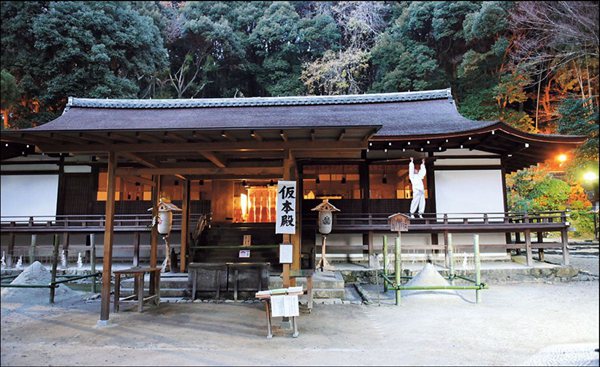Nara boasts incredible temples with links to China
 0 Comment(s)
0 Comment(s) Print
Print E-mail Shanghai Daily, April 2, 2015
E-mail Shanghai Daily, April 2, 2015
|
|
|
Uji Shrine is a pleasant place for a stroll. |
I never excepted to stay two whole days in Nara and neighboring sites when I planned a trip to Kansai, Japan.
Nara is known as the first capital of Japan and dates back more than 1,300 years. It’s worth visiting when in Kansai, where Kyoto and Osaka are the usual destinations for tourists.
Nara, home to eight UNESCO World Heritage sites, and neighboring Uji feature some of the country’s most treasured temples and shrines. It’s easy to see how Japan’s culture has been influenced by ancient China.
Eastern Great Temple, or Todai-Ji, is one of the UNSCEO World Heritage sites and features an architecture style reminiscent of the Tang Dynasty (AD 618-907).
Horyu-Ji, Kofuku-Ji, Todai-Ji and Kasuga Shrine all gave me a better understanding of Japanese culture.
There is a bus route connecting Nara station and tourist sites, but walking to them allows an opportunity to see some old-style shops and some deer, Nara’s mascot.
After walking for 15 minutes, I found a five-story pagoda and a three-story pagoda, which circled Kofuku-Ji National Treasure Hall. The buildings were originally built in AD 710 and moved from Kyoto to Nara.
About 1,500 years ago, China was the world’s most powerful country, which attracted Japan to send scholars to learn advanced technologies and culture. Several well-known monks, such as Master Kukai, helped build the temples and pagodas in Nara when they returned with newfound knowledge and skills from China.
So it’s not surprising to find Tang-style sculptures and artworks displayed in the national treasure hall, which requires a ticket.
Before entering the old-style Nandai-mon or south gate of Todai-Ji, I passed Nara National Museum, which was closed for renovations. Groups of deer gathered near the museum, napping or waiting for visitors to feed them. I bought deer cakes to feed them. They were so excited to eat up the cakes that one even ate my tourist map.
When translated from Japanese to Mandarin, Todai-Ji has the same name as a temple at Wutai Mountain in Shanxi Province. Both temples were originally built in the Tang Dynasty.
Before China’s Eastern Great Temple was found in the 1930s by architect Liang Sicheng, Todai-Ji was the best place for people to see Tang-style buildings in the world.
The world’s largest bronze statue of Buddha, two floors and red dougong, or bucket arch, clearly denote the style has been copied from China. But the windows, interior decor and deer are clear reminders this is a Japanese temple.
Deer are considered messengers of the gods in the local religion and they roam the grounds freely.
Next up is a visit to Horyu-Ji, in the southwest of Nara. It took about 20 minutes on a JR train and 15 minutes by bus to reach the temple originally built in AD 607.
There are few tourists here. I counted only 20 in the course of two hours.
Horyu-Ji is another UNESCO World Heritage site and is remarkably well preserved due to its remote location.
Aged wooden pagodas, sculptures and traditional Japanese screens brought me great enjoyment and inner peace, and this was my favorite place on the trip. The next day I took a 30-minute train trip to Uji, a small city between Nara and Kyoto.
Besides famous Uji mocha, the city is known for old historic sites including Ujigami Shrine and Byodo-In. The shrine was built more than 1,000 years ago and is the oldest in the country. Byodo-in is depicted on the 10-yen coin. Both are UNESCO World Heritage sites.
The sunset added a golden charm to Hoodo, or Phoenix Pavillon, the main building of Byodo-In. The soft sun light in the evening makes the whole building glow, especially the golden phoenixes on the roof.
It is worth taking 20 minutes to see the main hall, but you will have to take off your shoes. Well-carved 51 “bosatsu,” or gods in cloud sculptures, and mural paintings hung in the hall.
Uji is considered by many as the tea capital of Japan. If you are not used to pure mocha, try the mocha ice cream and chocolates. Two stores going back decades sold tasty mocha products.
Fushimi Inari Taisha was the last stop before I headed to Kyoto.
The shrine sits at the base of a mountain 233 meters above sea level. The mountain has 4 kilometers of hiking trails. The hundreds of red torri gates, most commonly found at the entrance or within shrines, provide plenty of subjects for amateur photographers. There are also a lot of foxes in the area. Then I made my way to Kyoto. Although it’s far more famous, I found Nara more interesting and much less crowded.







